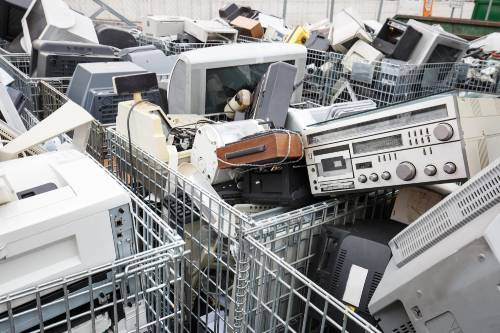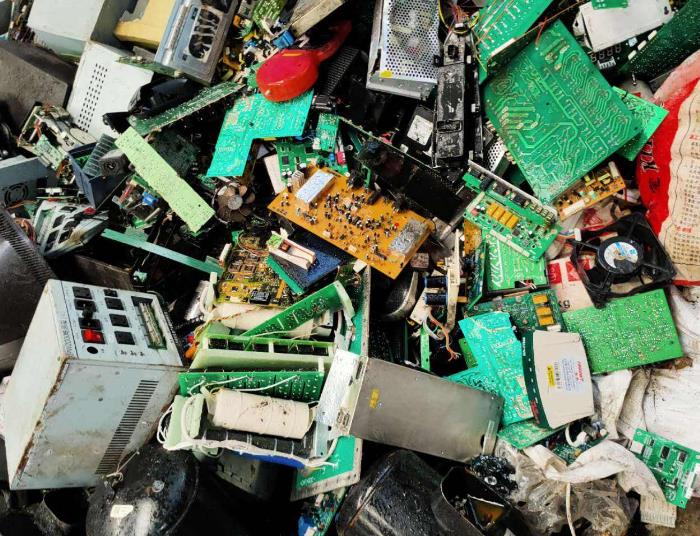The Best Strategy To Use For Recycling Lives Services
Table of Contents5 Easy Facts About Recycling Lives Services DescribedSome Known Facts About Recycling Lives Services.The Facts About Recycling Lives Services RevealedThe 3-Minute Rule for Recycling Lives Services3 Simple Techniques For Recycling Lives Services

You can take all home electric products to Oxfordshire's waste reusing centres for recycling. If your item is in functioning problem, take into consideration donating it. If your electrical thing is damaged, you might try to find a local repair caf where volunteers can repair it. You can additionally take into consideration obtaining electrical items that you do not use often. Furthermore, all Oxfordshire local authorities approve vapes and e-cigarettes as a separate kerbside collection. Just how they are collected in each location varies slightly; inspect you have the correct info for your area.
Portable batteries the kind you locate in small handheld devices can also be reused at the kerbside however not inside any one of your bins. Check the Waste Wizard for exactly how to do this in your location. Larger shops that market batteries likewise have collection factors for reusing old batteries. Batteries should constantly be gotten rid of from electrical products where they are developed to do so and reuse independently, Energy-saving, LED and portable fluorescent light bulbs and tubes can be recycled at our reusing centres.
Recycling Lives Services Things To Know Before You Get This
Older-style filament or halogen light bulbs can be gotten rid of in your basic rubbish container at home. Some do it yourself stores also have collection factors for light bulbs. Tiny electrical things (small adequate to fit in a copyright bag) can be reused at our waste recycling centres or at the kerbside. recycling lives services waste electronics.

More About Recycling Lives Services
Electrical products are damaged down right into separate pasts to ensure that the various materials they are composed of can be removed and recycled. Waste recycling centres are for use by homeowners only and can not approve waste from business resources. Little services and traders have a duty of treatment under this system, which indicates they also need to adhere to the WEEE policies.
E-waste, digital waste, e-scrap and end-of-life electronic devices are terms often used to define utilized electronics that are nearing the end of their valuable life, and are discarded, given away or provided to a recycler. The UN specifies e-waste as any type of thrown out items with a battery or plug, and includes hazardous and dangerous substances you can try this out such as mercury, that can present serious danger to human and ecological wellness.
Recycling Lives Services Fundamentals Explained
Just 17.4% of this electronic waste, consisting of a combination of dangerous substances and priceless products, will certainly be videotaped as being correctly accumulated, treated and recycled - https://experiment.com/users/rcyclng1vssvc. Many campaigns are embarked on to tackle this growing problem, however none of them can be totally reliable without the active function and right education of consumers

Mining discarded electronics produces 80% less exhausts of carbon dioxide per device of gold compared with mining it from the ground. In 2015, the extraction of raw materials represented 7% of the world's energy usage. This indicates that moving towards making use of even more secondary raw materials in electronic items could assist substantially within the targets laid out in the Paris Contract on environment change.
Recycling Lives Services - An Overview
When the carbon dioxide released over a device's lifetime is considered, it mainly takes place throughout manufacturing, prior to consumers buy an item. This makes reduced carbon procedures and inputs at the production stage (such as use recycled raw materials) and item lifetime key components of total ecological impact.
Even in the EU, which leads the world in e-waste recycling, simply 35% of e-waste is officially reported as effectively gathered and recycled. The lack of reusing weighs heavily on the global electronic industry and as tools come to be more many, smaller and extra complex, the issue escalates.
The staying mass of e-waste mostly plastics laced with metals and chemicals positions a more unbending problem. A new vision for the production and consumption of electronic and electric products is needed. It is very easy for e-waste to be framed as a post-consumer issue, but the concern incorporates the lifecycle of the tools every person utilizes.